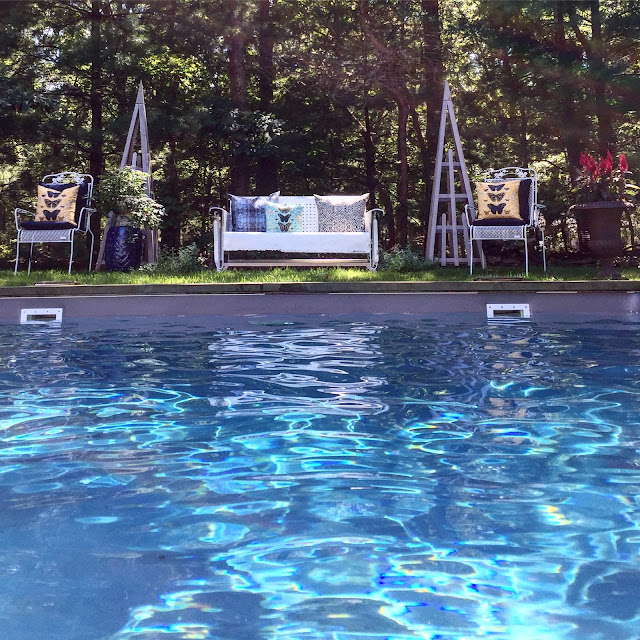Why In Design: The Long History of Hexagon Shapes in Our Home & Architecture
Why We Are Fascinated
With the Hexagon Shape
in Architecture & Design
With the Hexagon Shape
in Architecture & Design
honeycomb shaped lit wall I spotted,
Maison & Objet, Paris from Christofle
"the hexagon...absolutely perfect in economizing labor and wax"-Charles Darwin (on bees choosing the shape for their honey-making)
Charles Darwin thought the honeycomb shape (the hexagon) was a perfect design. As many mathematicians, scientists, artists and the lovely creature the bee have known for a long time, this shape (with its equal parts and sides that fit together on a flat surface without leaving gaps) makes a perfect design for many purposes. To hexagon is a six-sided polygon with the total internal angles of the shape totaling 720°. The design world has come to love it as well, and maybe for its mysterious properties, it's genius design, and perhaps how it makes us feel? I like to think of the hexagon as the mystery shape, holding some zen-like power over us. If it's good enough for the busy and hard working bee, it's good enough for our homes as well.
The History:
Going back to the Roman times of 36 B.C., philosophers/scholars have wondered about the honeycomb shape, and then Marcus Terentius Varro coined the phrase, "The Honeycomb Conjecture" which theorized the honeycomb shape had some hidden logic of why the bees utilized the shape to make honey. It wasn't until many generations later that this hypothesis was actually proven to be true, and that in fact the honeycomb shape is the most mathematically perfect form, leaving very little waste when the shape is lined together.
The hexagon shape has a long history in our world and design, and holds significant historical religious meaning as well. This six-sided shape has been shaped and integrated into our homes from the Middle Ages to current day. Much of the reason has to do with religion and the churches power over architecture in various time frames--the Christian faith has been enthralled with the values and meaning of the hexagon, believing its shape channels the departure from life, the journey. At the risk of sounding dreary, the hexagon shape for early architecture was inspired by the form of the casket. Many religions also believe the hexagon's six sides represent the six days of creation, then the time God rested. This religious meaning shows itself in the architecture of many time periods including Colonial Williamsburg architecture where the shape was celebrated in all forms, from bathroom tile designs to the style and shape of the cupolas and architectural detailing. Different architects and designers throughout history have taken the honeycomb shape and made it popular again.

Built in 1720, this hexagon structure was built behind the Governor's Palace in historic Colonial Williamsburg

Designers who have loved the hexagon:

David Hicks--this renowned English decorator and product designer from the 1960s took the geometric hexagon and utilized in in his fabric and wallpaper then swathing the shape onto the walls and furniture into the homes of many aristocratic clients during this time frame. Hicks re-popularized the honeycomb shape with his iconic wallpaper design, Hexagon.
Jonathan Adler re-invented the shape and added it its recent popularity, which many feel is the iconic shape of our generation. He shows it in modern light on furniture, ceramic, accessories and other designs.
I took inspiration from watching my daughter create her models for her Organic Chemistry classes. Her notebook of illustrations and doodles with mathematical forms is fascinating and now these are added to root cellar designs.
XO Tamara














